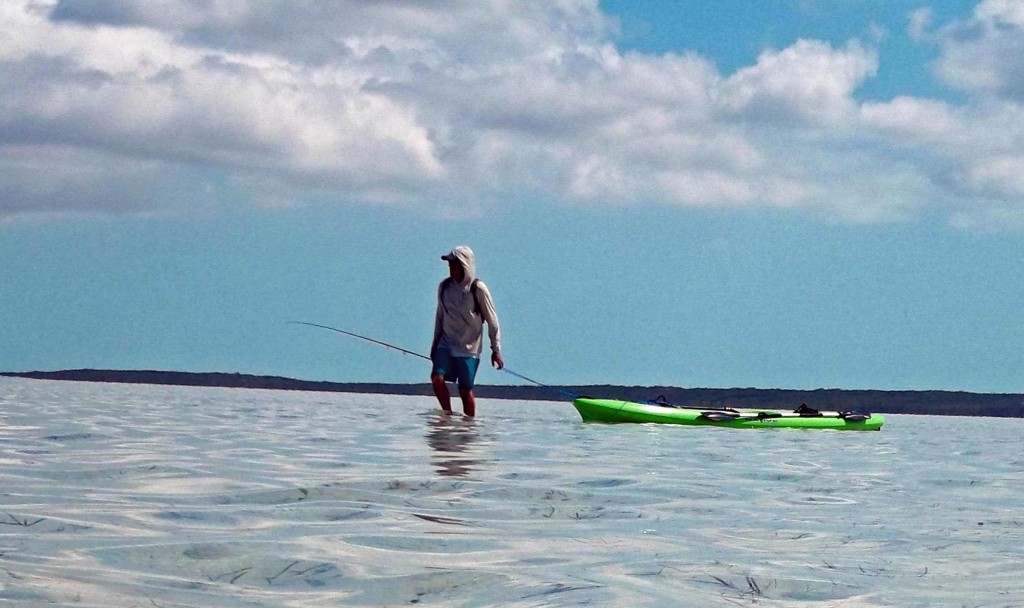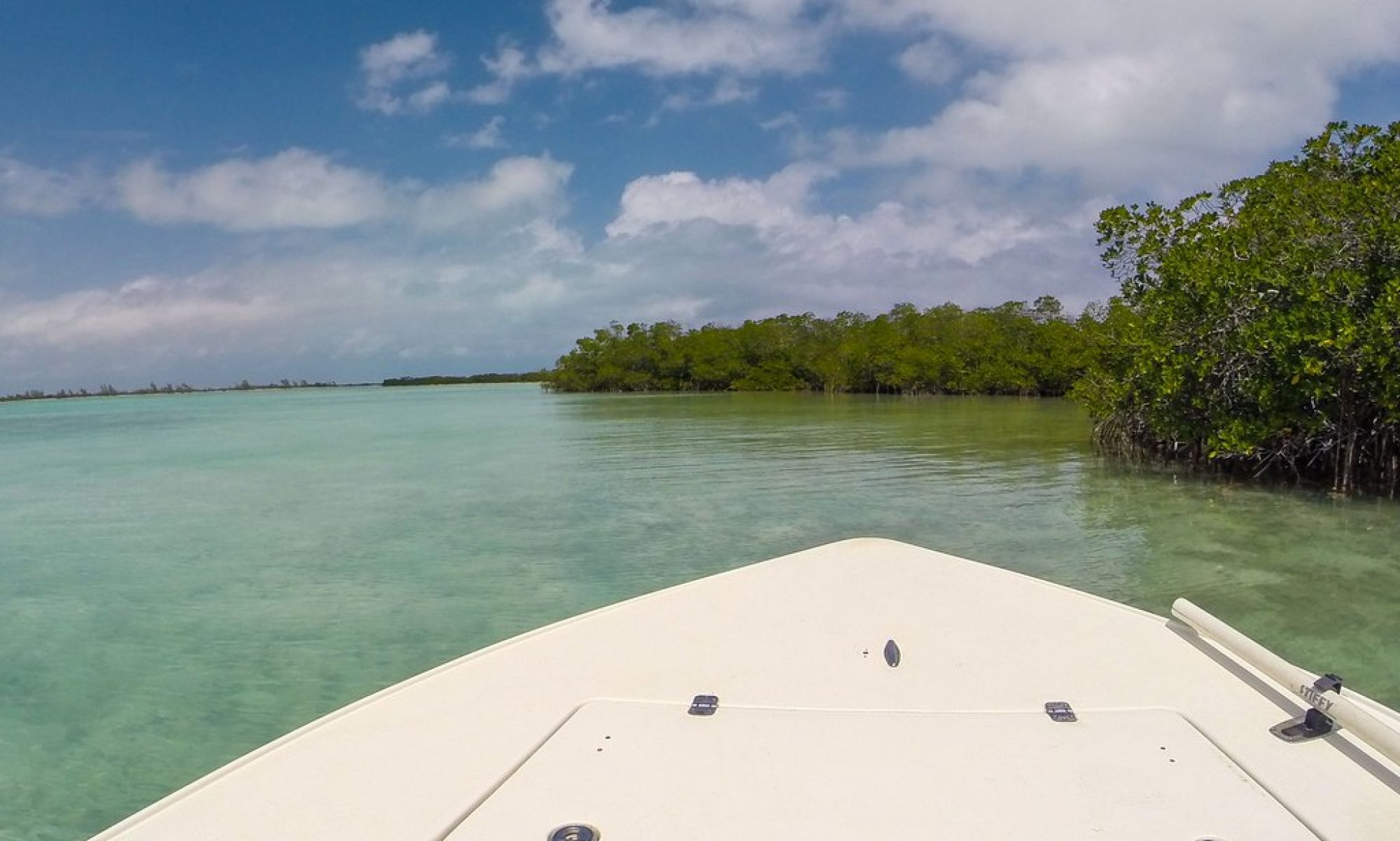
Wading for bonefish on the flats of Provideniciales or North Caicos can be a productive way to stalk bonefish when they are a little wary and particularly during the middle of the day when the sun is high and visibility is good. Shane contacted us looking for some advice about the best way to explore this option.
We agreed that a productive way forward would be to take a guide for a day that could point out the channels that the bonefish migrate in and out of as the tides on the flats of North Caicos and Bottle Creek ebb and flow. He did not spend much time fishing that first day, but acquired a good sense for where productive areas might be as he planned his next three days self-guiding using kayaks and StandUpPaddleboards from us.
Here is his description of the adventure :
My North Caicos fishing adventure started with a guided trip on a flats skiff built by one of the owners of Greatbonefishing, Howard Gibbs. Rather than spending the day dedicated to fishing, Howard directed us to the flats that would be easily accessible by me over the next few days when I was going to be fishing solo on one of the “Versaboard” StandUpPaddleboards (SUP’s). We didn’t see many fish the first day – but I locked in the location of several flats that were serviced by channels that ebbed and flowed strongly with the tide.
The next three days I concentrated on the North end of Bottle Creek and self-guided or DIY bonefished in several productive areas. The bonefish were clearly tide dependent, as they would “switch on” at a moment’s notice and the flats would go from looking deserted to being able to spot fish consistently. I had opportunities at many schools of fish and lots of shots at singles and doubles that were good sized fish – possibly into double figures.
The SUP worked well for me as they are well equipped with flyrod holder, a small anchor and decent stowage. I was able to calmly walk the flats, gently pulling the board behind me, as well as at times standing and paddling in search of fish.
Overall a great experience and highly recommended.
FAQ when Fishing or DIY Flyfishing in the Turks and Caicos:
Q: What should I bring ?
A: The strength of the sun can be misleading when out on the flats as you are usually accompanied by a decent breeze that cools you off. Do not be fooled however ! Make sure that you have a (reef friendly) good sunscreen, hat and importantly a comfortable pair of polarized sunglasses.
Q: Is there a difference between Polarized sunglasses ?
A: If the sunglasses are polarized then they will be UV protected also. There is an easy way to check for polarization by looking through one pair to the second pair and then rotating one pair through 90 degrees. When looking for fishing polarized glasses – particularly for flats fishing, having broad sides is often appreciated as the arms limit the mount of glare and wind that can penetrate from the side.
Q: What is the bottom like for wading and what should i wear ?
A: The flats of North Caicos are ideal for wading – for the most part they are firm and sandy. we recommend that you wear something comfortable on your feet – just enough to protect the soles in case of a broken shell or piece of coral. Many anglers prefer Teva type sandals with neoprene socks to keep (or limit) the sand rubbing on your feet.
Q: Can i get lost ?
A: When on the flats, the mainland is almost always in sight, so landmarks are readily available. The flats lie between the East Bay Cay and the mainland – a distance of 1-2 miles.
Q: How deep is it ?
A: Where we are likely to be fishing, the water tends to be ankle deep to calf deep. There are channel that we use to navigate from one flat to another that can be up to 8 feet deep, but you won’t be anywhere close when wading
Q: Can I do DIY fishing on the flats of North Caicos
A: The challenge to self-guide for bonefish on the flats of North Caicos is that there is a deep channel that runs directly along the mainland that must be navigated before it is shallow enough to stand. Even then it is approximately four feet deep for about half a mile until you reach the “bank” which is where it is comfortable to wade fish.
